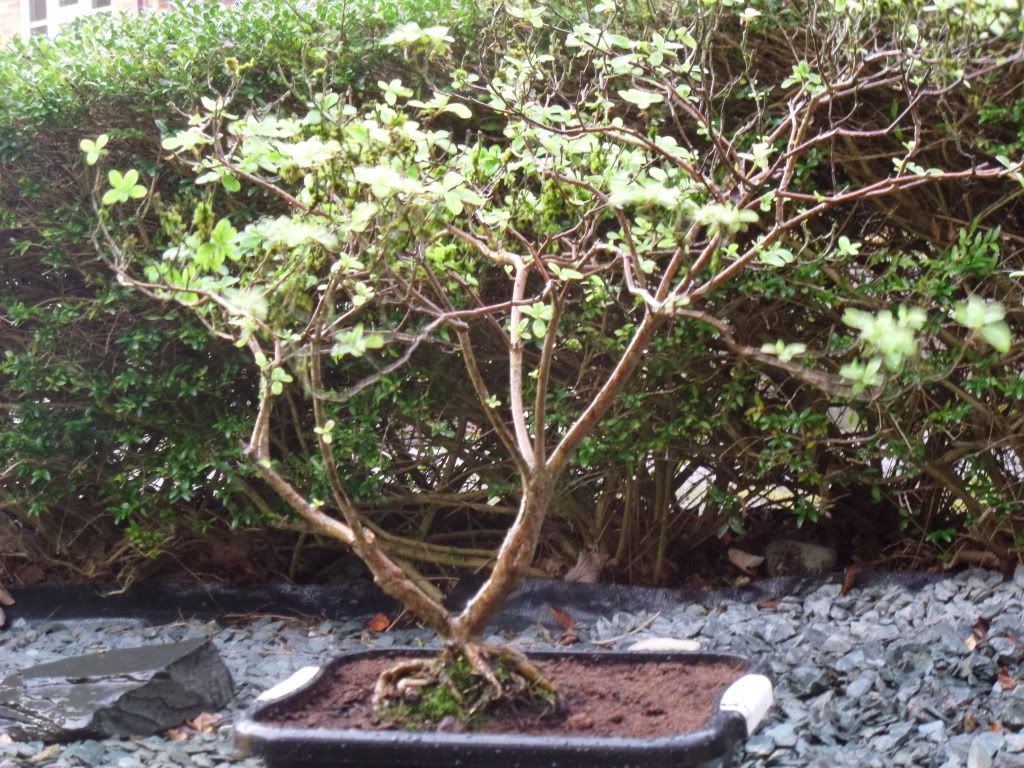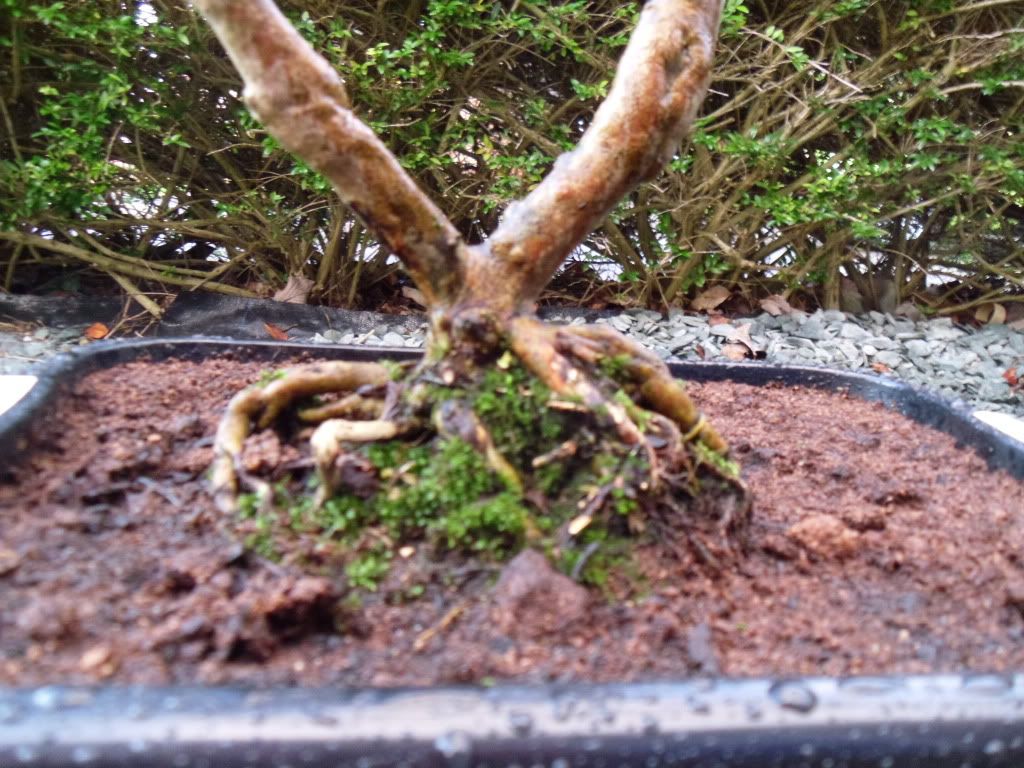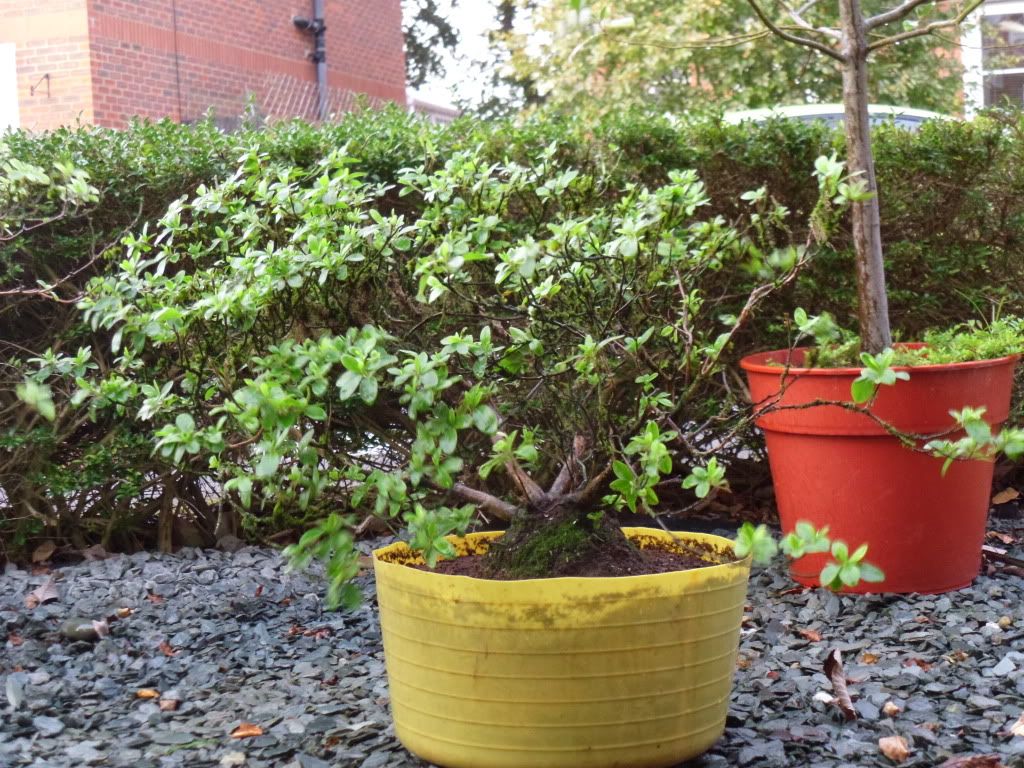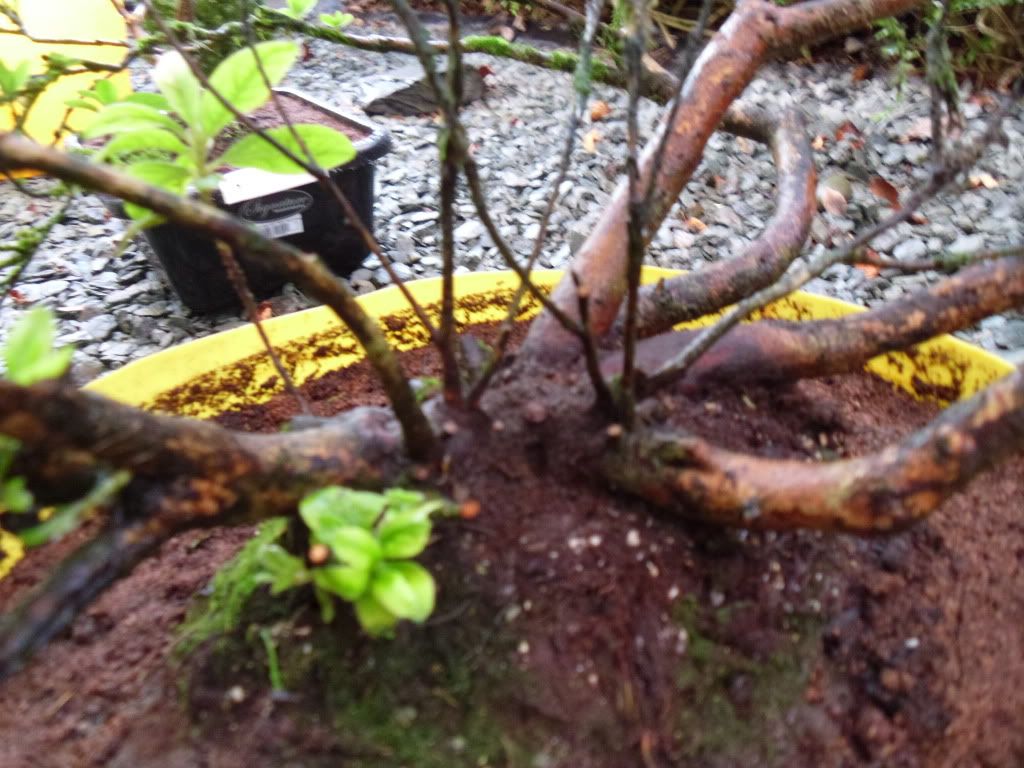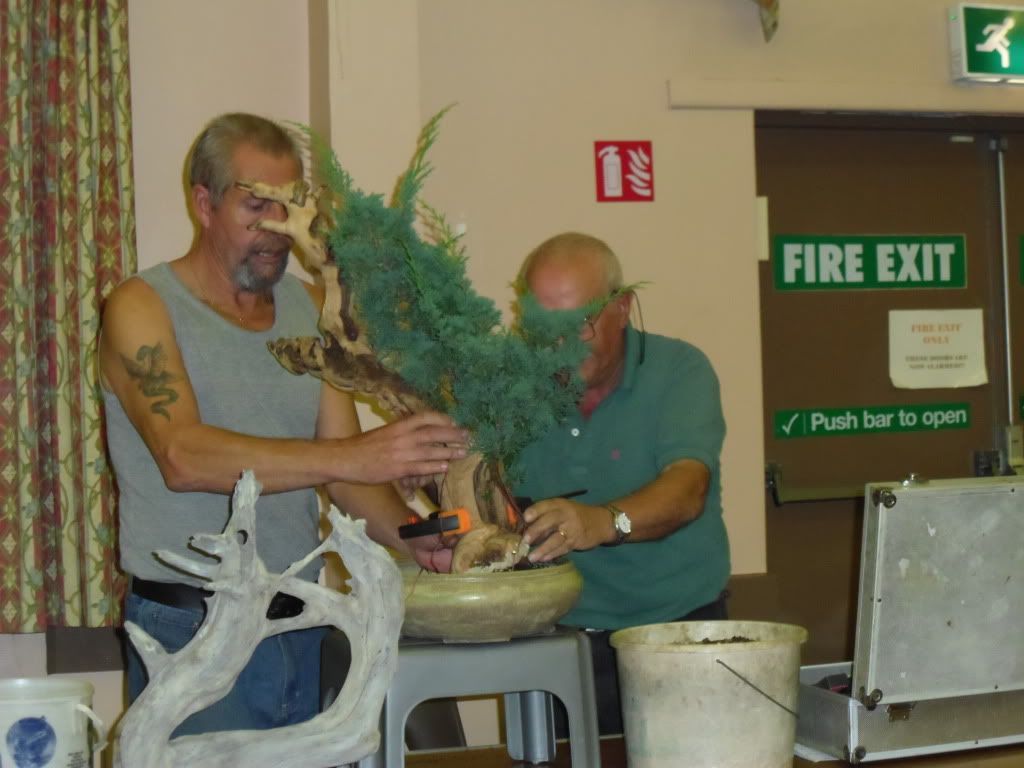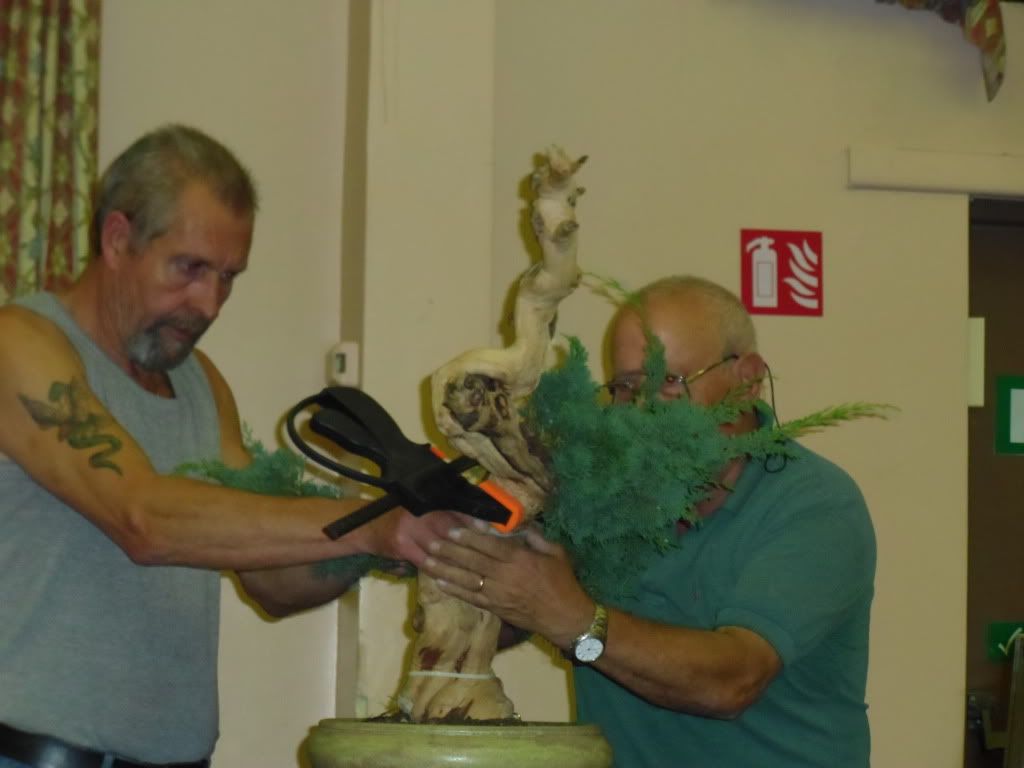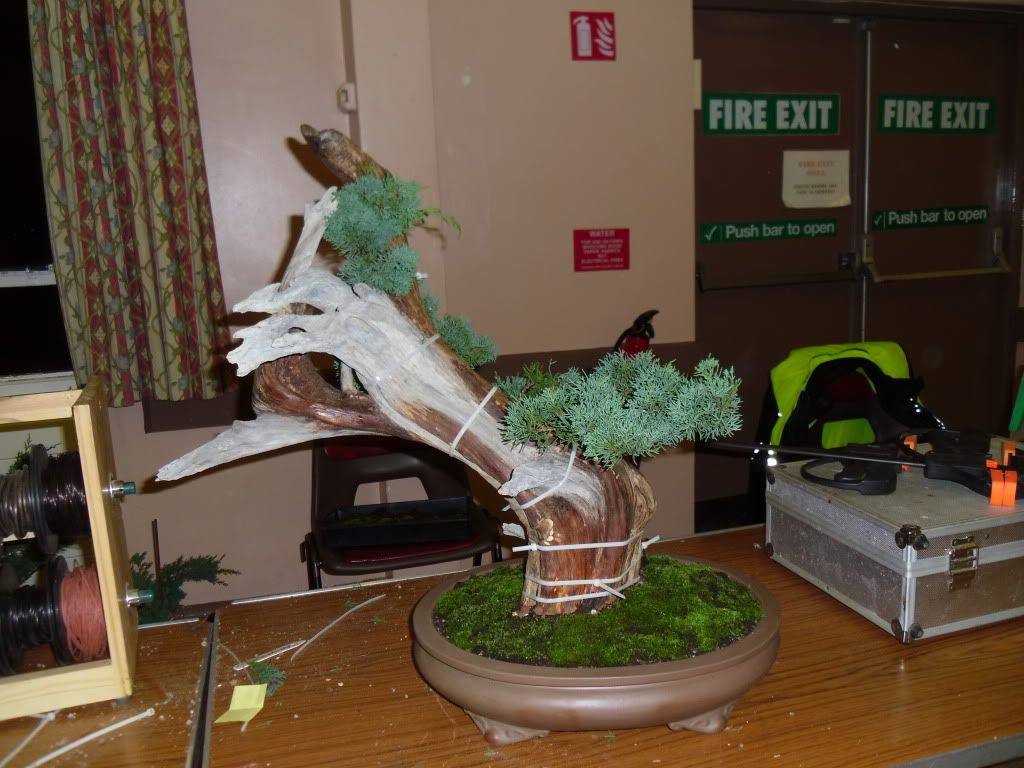On Friday I popped in to Koirin azalea Center. Its just up the road from my golf club, Crane Valley Golf Club in Verwood. I've been meaning to go in and have a look around to see what there stock is like since I took an intrest in bonsai and learned that you don't need to grow from seed. I knew they sold other material other than azaleas in the nursery so was keen to see if there was any material that has potential for bonsai. I spoke to the owner and explained that I was looking for bonsai material and to my surprise the guy used to be a very keen bonsai enthusiast him self and used to be a member of the Wessex Bonsai Society of which I am now a member of. This was great to hear because he could then point me in the right direction regarding bonsai material. He took me to a potting area in the yard where there were ten or so azaleas that he explained had been mistakenly left to grow without cutting back. He told me that these shrubs make better bonsai because, although they look shabby they have long leader branches which help thicken up the trunks. I had a rummage through them looking only at the trunks as the branches can be grown later on. I chose one that I thought could possibly with time make a good bonsai but only time will tell.
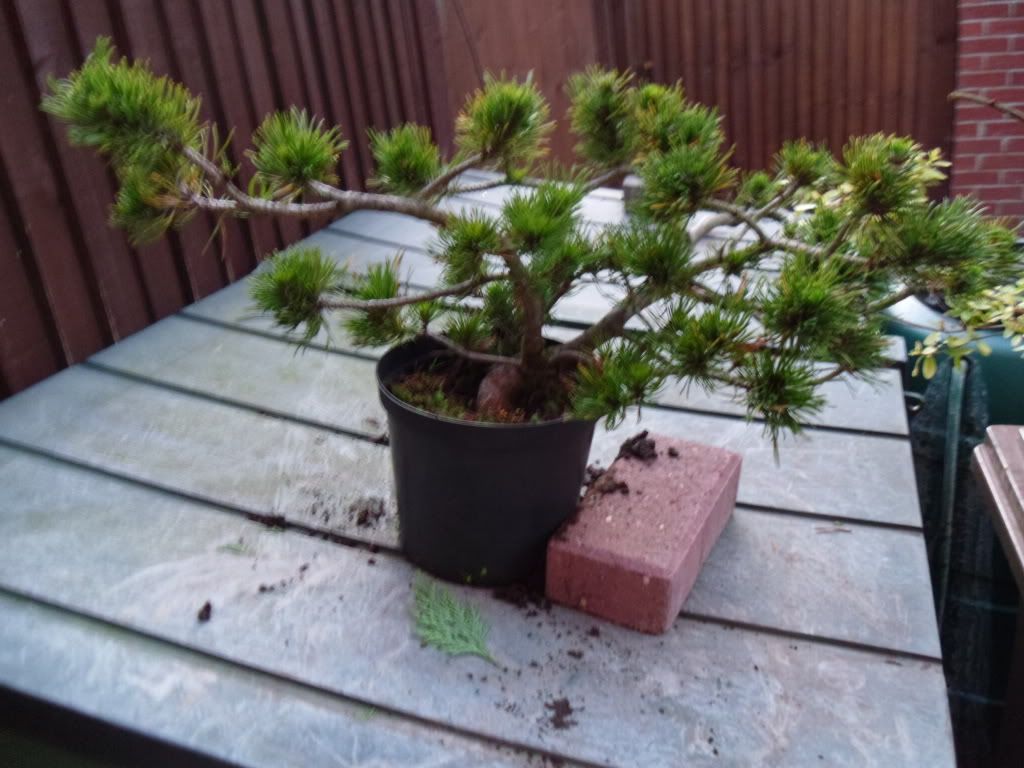 |
| The Mugo Pine as I bought it for just £6.95 |
When I got them home I decided the azaler just needed potting in a larger garden pot and feed up until its health was better after being in the under sized pot for to long.
I checked with the guys over at weetrees and they said that pruning pines in September is fine because by now any new growth will of reached this years potential. Now I know many people regard cascades a lazy style as lots of material we use for bonsai are low growing and have a spreading tendency which suits cascades naturaly. But I had a look through it and from the curve in the main trunk decided a cascade or semi cascade was the only way I could really go with this pine.
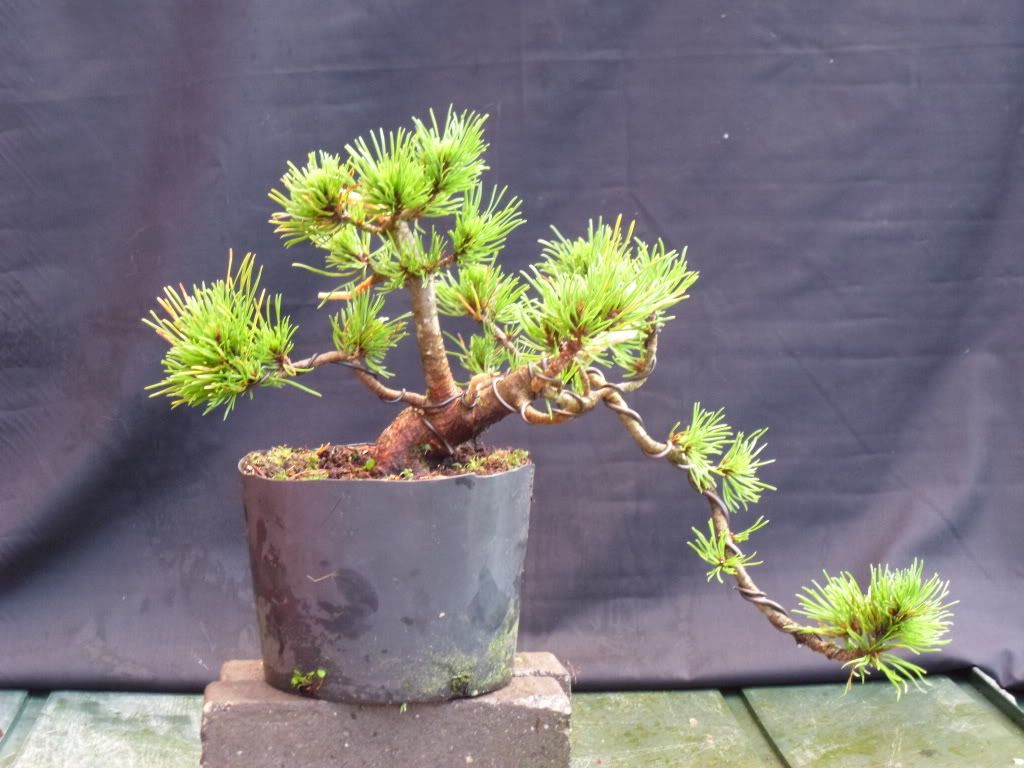 |
| Initial styling of Mugo Pine 17/09/2011 |
The first thing I did was to cut the top from the pot so I could see the bottom of the trunk and get to the whole tree. It was pretty apparent which branch I would use as the main trailing trunk. One branch had a lot more folage points at intervals of about two inches apart. I then decided to cut out anything that definitely fit in with the image. This left me with just a few branches and made it a lot easier to create a pitcher of what I wanted the tree to look like in my mind. The image I was thinking of obviously was older and more mature than the tree before me but I believe its best to aspire to an end goal rather than a start point. This way your always working towards the same goal rather than changing it every time you work on a tree. I then cut out anything that didn't fit in with the picture in my head and wired the remaining branches. Then worked some movement in to the tree until I got what I, at the time believed to be as far as I could go with it for now.
 |
| MKonig's Vert |
I posted the photo above in a thread on weetrees to show the members what I had done and ask for any critisam so I could improve on it. A couple of people commented on the tall, striaght upright trunk with two nodes with multiple branches on it looked wrong and I should definitely reduce the branches at the same point down to at least two. I agreed with the advise and had already wondered about it myself but didn't know what I could do about it. One member MKonig suggested cutting off all the back and turning it in to a full cascade like in the vert he did for me shown to the right. I agreed this does look a much better bonsai image but when I went back out side to do the appropriate cutting it became apparent to me that this would not be as realistically viable because the small branches that I had wired up to the sides of the main trailing trunk. It would look great from the side but be very 2 dimensional. Mike could not see this because he only had the photo I had given him to work with.
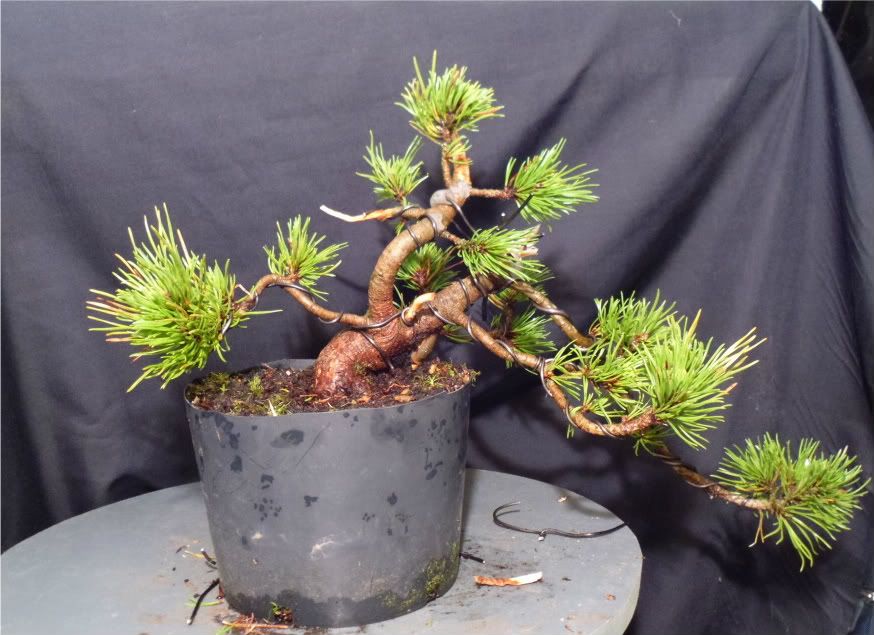 |
| Mugo Pine as of 18/09/2011 |
The next day I went out and had another look. I decided because it was mainly the straightness of the top trunk that was a problem if I could get movement in to it I would be left with a better looking tree. Luckily, being a mugo pine that are much more flexible than other pines I was able to get quite a bit of movement in to the trunk. After removing a couple of small unnecessary branches I think this really is all I can do with the tree for now. I was advised to leave it well alone for a year or even two to let it regain strength after such traumatic surgery. I shall feed it up now until October with Tomartorite to hopefully give it the strength it needs to prepare for winter.
I hope you enjoyed reading this and if you wish to leave a comment please do so I'm glad to hear any criticism and and advise you may have.
Dean.



